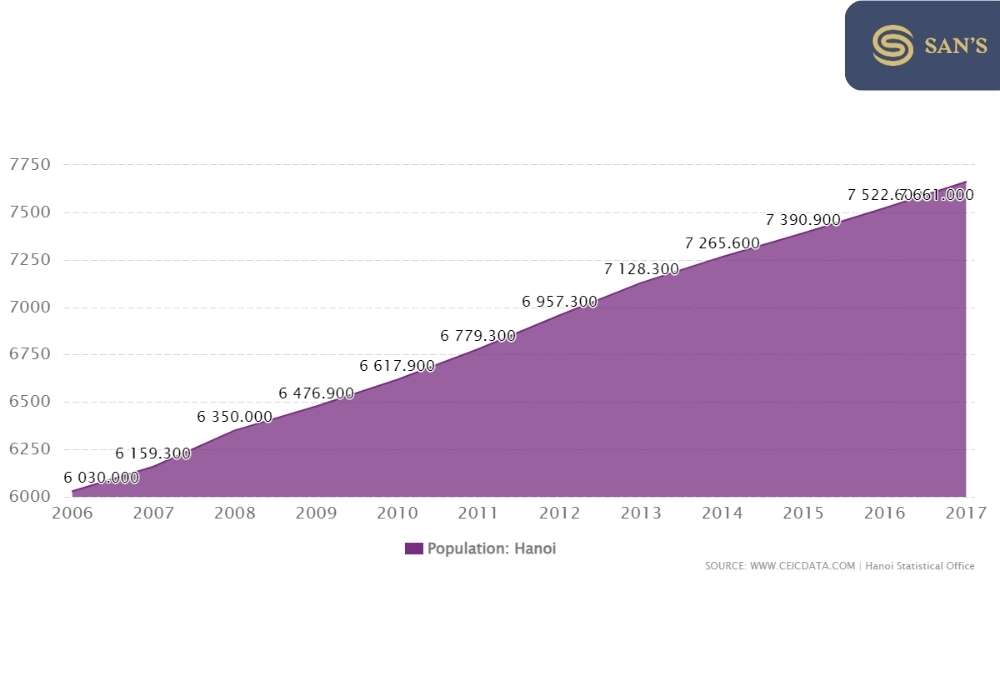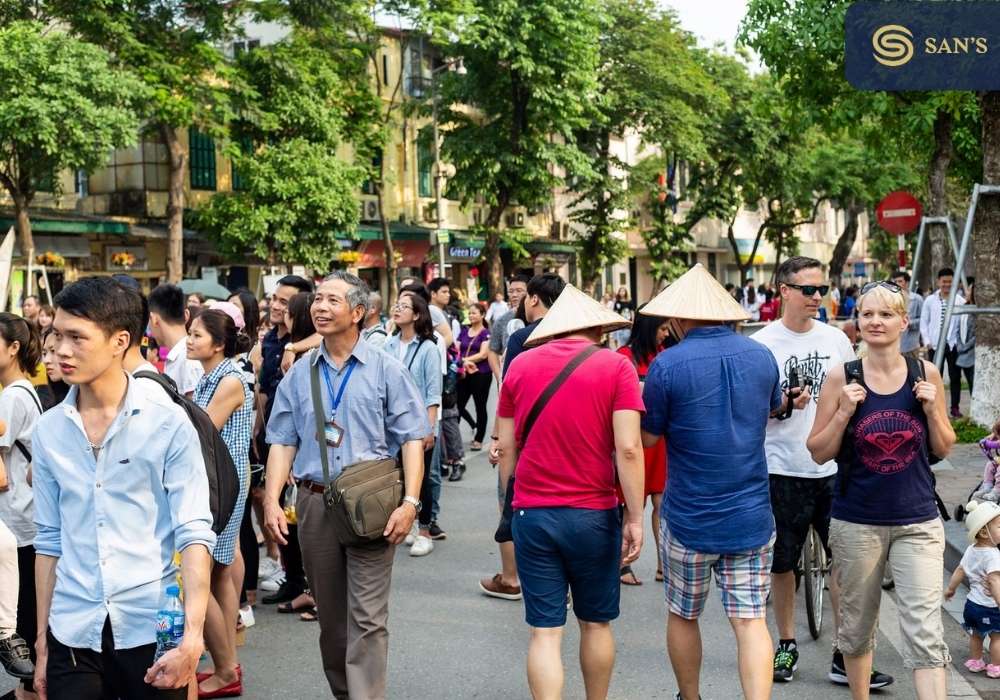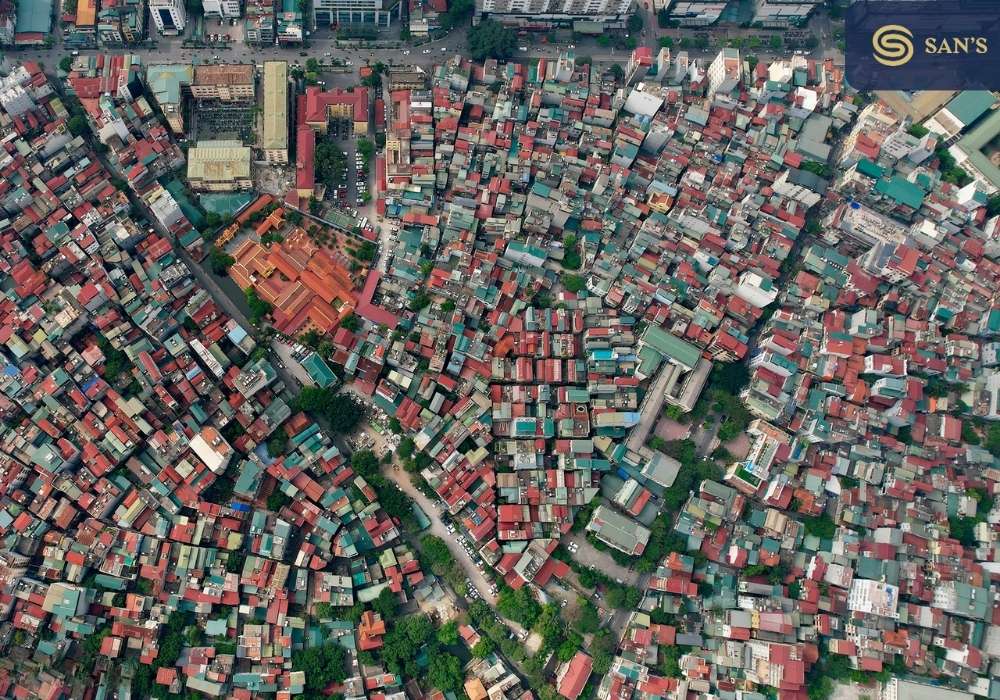Hanoi population has undergone notable transformations over the years, with shifts in district populations, population density, and various demographic facets such as gender, age, marital status, occupation, religion, and income. This article, enriched with the most recent 2020 data from GSO, offers a comprehensive look at the intricate dynamics of the Hanoi population, providing a detailed exploration of the evolving demographic landscape of Vietnam’s capital city.
What is the Current Population of Hanoi, Vietnam?
As per the data provided by the General Statistics Office of Vietnam (GSO) in 2020, Hanoi’s population stands at 8,246,600, marking a 0.976% increase from 2019’s 8,053,663 inhabitants. The city has experienced a consistent growth over a decade, with an average annual increase of 2.22% from 2009 to 2019, surpassing the national average.
Fast forward to 2022, Hanoi, boasting a population of 8,246,600, is recognized as the second most populated city in Vietnam and exhibits the second-highest population density across the 63 provinces and cities of the country.

The city’s population density is 2,398 people per square kilometer, which is 8.2 times more than the national average. This is a notable increase from the 469 people per km2 recorded in 2009 and 833 people per km2 in 1999.
The Hanoi population is dispersed unevenly across its districts and sub-districts. Urban areas like Dong Da, Thanh Xuan, Hai Ba Trung, and Cau Giay are the most densely populated, with respective densities of 37,347; 32,291; 29,589; and 23,745 people per km2.
Conversely, suburban districts exhibit a contrasting scenario. Hoang Mai, Nam Tu Liem, Bac Tu Liem, and Ha Dong have seen a remarkable surge in population, showcasing the city’s expanding footprint and development.
In the outskirts, the population is also distributed unevenly, with districts like Thanh Tri and Hoai Duc having 4 to 6 times higher population compared to other suburban districts such as Ba Vi and My Duc. This varied distribution underscores the dynamic and diverse demographic landscape that characterizes Hanoi, contributing to its vibrant cultural and economic milieu.
Delving Deeper into Hanoi’s Demographics and Hanoi Population
1 – Sex Ratio Examining
the gender composition of the Hanoi population reveals nuanced shifts over the years. The sex ratio, defined as the number of males per 100 females, has been on a gradual incline. From 2009 to 2019, it shifted from 96.6 males per 100 females to 98.3. While this uptick is notable, it’s still beneath the national average of 99.1 males for every 100 females.
2 – Age and Marital Status
A glimpse into the age and marital dynamics of the Hanoi population unveils patterns reflective of broader societal trends. According to 2019 data from the GSO, 69.6% of Hanoians aged 15 and above are married, while 1.7% are either divorced or separated. These figures are comparable to national averages, with 69.2% of Vietnam’s population being married and 2.1% divorced or separated.

3 – Education
Education in Hanoi has witnessed significant strides. The literacy rate among the Hanoi population aged 15 and above has surged markedly from 2009 to 2019. The city has been successful in attaining near-universal primary education.
The educational landscape of Hanoi is robust, with a total of 2,709 schools and educational centers recorded at the end of 2018. This includes 2,190 public and 519 private institutions. The breakdown comprises 1,128 preschools, 735 primary schools, 624 junior schools, 222 high schools, 393 IT and foreign language centers, and 584 community support centers. This educational infrastructure underscores the city’s commitment to fostering an educated, informed, and skilled Hanoi population.
These insights into the sex ratio, marital status, and educational attainment of Hanoi’s residents offer a comprehensive perspective on the demographic contours shaping the city. They reflect not just numerical data, but the evolving social, cultural, and educational narratives that are integral to understanding Hanoi’s populace in its entirety.
4 – Religion
As of mid-2020, the government recognizes seven religions as legal entities in Hanoi, underscoring the city’s openness and acceptance of different faiths and beliefs. Buddhism, Catholicism, Protestantism, Cao Dai, Islam, Baha’i, and Minh Su Dao are those formally acknowledged, alongside various other religious groups and folk beliefs.
Buddhism
Buddhism boasts a significant following in Hanoi, with over 800,000 adherents, 2,060 monks and nuns, and more than 1,000 religious sub-dignitaries and activists. There are 2,059 temples and monasteries dedicated to the practice of Buddhism, making it a prominent religion within the Hanoi population.
Catholicism
The Catholic community in Hanoi consists of approximately 250,000 followers, spread across 400 places of worship, 83 parishes, and 306 branch parishes. There are 19 religious communities with over 270 monks and religious activists residing in 20 monasteries.
Protestantism
Protestantism in Hanoi is represented by 33 denominations, with 7 recognized as legal entities by the government. There are over 10,000 followers, including more than 6,000 Vietnamese believers, about 1,400 Koreans, and over 3,000 international followers from 40 different nationalities.
Islam
The Islamic community in Hanoi is centered around a mosque, with 86 local Hanoians, about 300 Cham and Tay Ninh people, and over 500 believers who are foreign nationals from 18 Arab countries.
Other Religions
Cao Dai has a modest following, with nearly 400 adherents and over 50 dignitaries. The Baha’i faith is practiced by more than 400 followers with 20 sub-dignitaries, organized under 15 local spiritual councils. The Church of Jesus Christ of Latter-day Saints has around 200 followers in the city. Minh Su Dao, another recognized faith, has one organization comprising 50 followers and 3 sub-dignitaries.
Folk Beliefs
Apart from these religions, folk beliefs also permeate Hanoi’s cultural landscape, with 5,211 relics of communal houses, temples, family churches, mausoleums, shrines, etc., evidencing the city’s rich spiritual heritage.

5 –The population of Hanoi & career
As per the data accumulated by the General Statistics Office, as of 2020, Hanoi’s workforce, comprising individuals aged 15 and above, is approximately 4,124,620. Out of this population, over 3.5 million are actively engaged in various economic sectors. Unemployment figures from the first quarter of 2021 indicate about 27,200 unemployed individuals, distributed between urban (over 8,400) and rural (18,800) areas of the city. Men represent a higher unemployment rate, with 14,900 unemployed compared to over 12,300 women.
Hanoi’s labor quality ranks among the nation’s highest. The distribution of the workforce across key economic sectors as of 2019 was as follows: 31.4% in agriculture, forestry, and fishery; 27.7% in the industrial sector; and 40.9% were employed in the service sector.
6 –The population of Hanoi & income
In the opening quarter of 2021, workers aged 15 and above in Hanoi earned an average monthly salary of 8,738,000 VND. Men’s average earnings were 9,226,000 VND, while women earned around 8,191,000 VND on average.
A preliminary income report from Hanoi’s Department of Labor, War Invalids, and Social Affairs in 2021, based on data from 6,227 enterprises, revealed variances in average salaries across different types of companies. Government-held one-member limited liability companies reported an average monthly salary of 6,800,000 VND per person.

In contrast, employees in companies where the government holds a controlling stake earned about 6,700,000 VND. Private enterprise employees averaged 6,550,000 VND, while those in Foreign Direct Investment (FDI) enterprises received an average of 7,150,000 VND monthly.
Over a decade (2009-2019), the Hanoi population has undergone significant transformation, growing at an average annual rate of 2.2%. This growth has induced substantial impacts on economic evolution, employment trends, and various life aspects in the city, marking a dynamic shift aligned with the city’s development trajectory and demographic alterations.
These insights into employment and income trends amidst the evolving Hanoi population offer a comprehensive perspective on the city’s labor market, economic participation, and the interconnectedness of population dynamics and economic progression.





